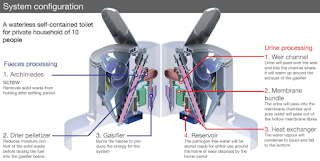SLIDING TO THE SLUM ~ PART II: SOLUTIONS TO THE PROBLEM
A sanitation facility providing proper public health and socioeconomic benefits should be easily accessible, ensure privacy, dignity, cleanliness and a healthy environment (Okurut et al., 2015). As exposed in the previous post, these conditions are clearly non existent in most African slums. To fight this problem, some solutions could be proposed that in most cases need a collaboration between governments and local authorities, as well as external agents.
The list below provides a general sketch of some ideas that have been suggested which could improve the situation of the poor population facing lack or low-quality water and sanitation access in slums. Some of them are quite evident while others are related to areas that may not seem quite close at first.
- Improving agricultural productivity. This would create employment in rural areas and therefore reduce migration into cities, which would help attenuating proliferation of slums. Measures to promote agriculture may include: subsidized agricultural inputs; credit facilities; guaranteed prices for agricultural products (to ensure stable incomes for farmers); helping farmers to form co-operative organisations to get savings for investment; promotion of sustainable practices that respect the natural resource base and use minimum levels of external inputs (for example, using safe nutrients such as compost); and tariffs on foreign food imports to make them competitive with local products (Kwasi Boadi et al., 2005).
- Tax incentives for industries to locate in rural communities. Similarly to the previous point, this would promote employment in those areas (Kwasi Boadi et al., 2005).
- Investing in the transport system. Effectivity of roads and other channels will enable rural farmers to reach to urban markets in order to sell their products (Kwasi Boadi et al., 2005). Also, this measure would enhance the extension of facilities and services to slums and lower-covered areas.
- Affordable electricity. This would be an incentive for rural industries to locate close to their sources and thus reduce their cost production (Kwasi Boadi et al., 2005). Again, the potential of agricultural sectors can be seen as a mitigating of slum growth and therefore have a positive effect in population’s access to water sanitation systems.
- Education. It exposes households to information and knowledge about the links between poor sanitation and hygiene (Boadi et al, 2005) and has been proved to reduce open defecation rates (Okurut et al., 2014). Furthermore, formal education would boost the access to a wider variety of job opportunities.
- Recycling. This would reduce the amount of waste to be disposed in landfills (Kwasi Boadi et al., 2005) and water channels. In fact, recycling is one of the essential features of a sustainable sanitation system, and new initiatives in this field could include on-site urban ecostations, source-separation of urine and faeces, decentralised greywater treatment and integration of sanitation into the cost of housing (Rosemarin, 2005).
- Involvement of all sectors of society. Including municipal authorities, local governments, community leaders, NGOs, and firms. Some actions potentially done jointy include urban rehabilitation projects, land use development and reform policies, municipal budget and investment planning (Kwasi Boadi et al., 2005); as well as affordable housing, sanitation and health infrastructure and poverty alleviation (through financial assistance for the poor to own land or approach basic services, for instance).


Comments
Post a Comment
Let me know what you think about this!